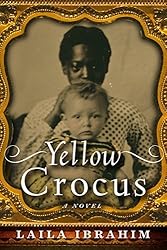This is just beautiful. The Yellow Crocus of the title represents Spring in nineteenth century
America. And Spring is all about new beginnings, new starts, growth and freedom
– which is all the more poignant when you live on a plantation where the workers are negro slaves.
Lisbeth is white and privileged, but grows up with a
closer bond to her black wet-nurse Mattie than she ever had with her stiff and
proper mother. Lisbeth is expected to be educated and marry well, but her
childish innocence can’t reconcile her circumstances with her regular visits to
the negro quarters and her developing relationship with Mattie.
Told from both Lisbeth and Mattie’s points of view, this
is an exploration of life on both sides as Mattie tries to explain her life and
Lisbeth realises how her own world is built on a foundation of cruelty. What’s
all the more telling is how Lisbeth’s parents believe this to be the norm –
they’re not intentionally bad people, but they genuinely believe that this is
the way life is and that they “look after” their negro slaves with their best
interests at heart.
And as Lisbeth grows up, times are changing and she is
forced to make hard choices. Some of her friends have become abolitionists and
Lisbeth must decide where her loyalties lie.
I loved this book. It’s one of those fly-on-the-wall
stories that depicts the details of a way of life long gone, complete with the
values of the time. It makes no apologies for the way things were, and there
are no political undertones or tales of morality. It simply was this way and we
see it through both white and black eyes. Fascinating and absorbing.

No comments:
Post a Comment